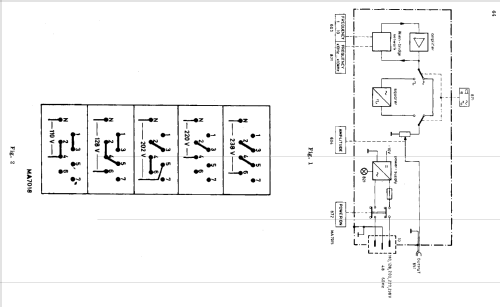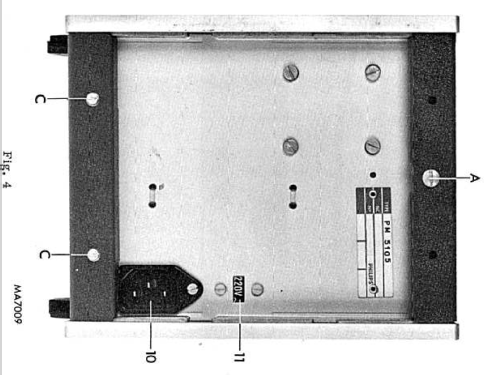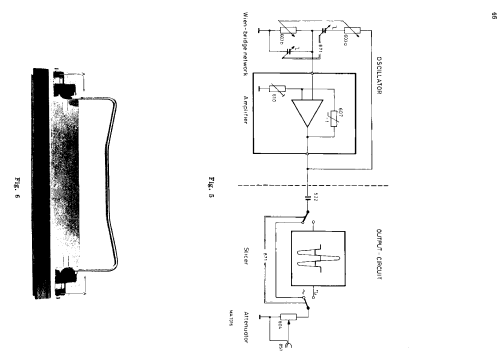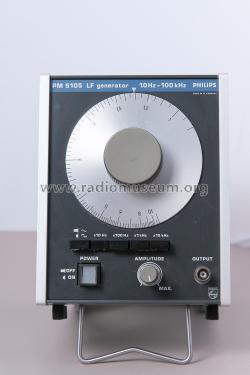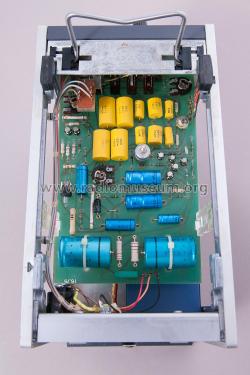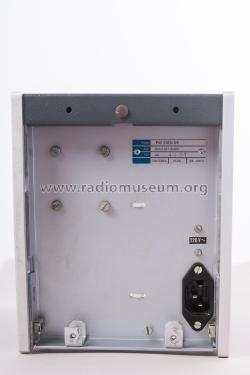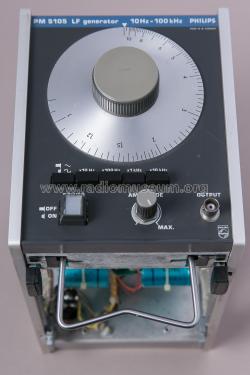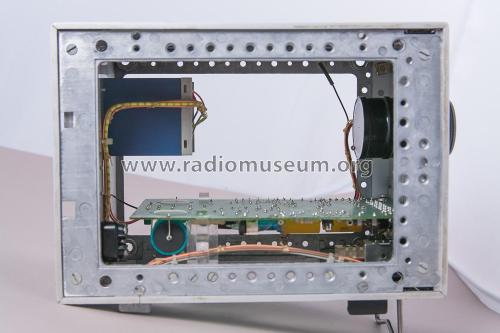LF Generator PM 5105/07
Philips Radios - Deutschland
- Paese
- Germania
- Produttore / Marca
- Philips Radios - Deutschland
- Anno
- 1970 ??
- Categoria
- Strumento da laboratorio
- Radiomuseum.org ID
- 211148
-
- Brand: Deutsche Philips-Ges.
Clicca sulla miniatura dello schema per richiederlo come documento gratuito.
- Numero di transistor
- 12
- Semiconduttori
- Principio generale
- Amplificatore audio
- Gamme d'onda
- Gamme d'onda nelle note.
- Tensioni di funzionamento
- Alimentazione a corrente alternata (CA) / 110; 220 Volt
- Altoparlante
- - Per cuffie o amplificatori esterni
- Materiali
- Mobile di metallo
- Radiomuseum.org
- Modello: LF Generator PM 5105/07 - Philips Radios - Deutschland
- Forma
- Soprammobile con qualsiasi forma (non saputo).
- Dimensioni (LxAxP)
- 180 x 140 x 250 mm / 7.1 x 5.5 x 9.8 inch
- Annotazioni
- Philips LF-Generator PM5105;
Niederfrequenz-Generator 10 Hz bis 100 kHz in 4 Bereichen,
Kurvenform Sinus oder Rechteck umschaltbar,
Innenwiderstand/Impedanz 600 Ohm,
Ausgangsspannung max. 20 Vss, stufenlos regelbar (ungeeicht),
Ausgang unsymmetrisch auf BNC-Buchse.
Generatore di segnali LF (Low Frequency) da 10Hz a 100kHz con forma sinusoidale o rettangolare.
- Peso netto
- 2.7 kg / 5 lb 15.2 oz (5.947 lb)
- Autore
- Modello inviato da Antonio Marra. Utilizzare "Proponi modifica" per inviare ulteriori dati.
- Altri modelli
-
In questo link sono elencati 2540 modelli, di cui 2251 con immagini e 1555 con schemi.
Elenco delle radio e altri apparecchi della Philips Radios - Deutschland
Collezioni
Il modello LF Generator fa parte delle collezioni dei seguenti membri.
Discussioni nel forum su questo modello: Philips Radios -: LF Generator PM 5105/07
Argomenti: 2 | Articoli: 7
I have a Philips PM 5105 Low Frequencies Generator and I need some tips for the alignment.
I have the service manual but the alignment potentiometers and trimmers (610, 516, 513, 605 and 621-523) are not sufficient to make the equipment work as it should.
As an example, the 400 Hz scale is reading 316 Hz on my oscilloscopes (Hantek and Siglent).
1 KHz is reading 2,4 KHz on the oscilloscopes.
The tension on the diode 452 is -16,7 V as expected.
Maybe the equipment is consuming more than the specified: It should be 4,5 W but I did measure 7,1 W on a non reliable meter. The same device is measuring 80mA for the PM 5105.
I did try the equipment (the first time that I did turn it on) on a dim bulb tester and variac and it was OK.
I did try to adjust it on the trimmers according with the manual to no avail.
Are the electrolytics the culprits? Are the transistors?
Thanks,
Alvaro Georg
Alvaro Georg, 14.Mar.23
Diesen Generator habe ich an Schulen inkl. Fachhochschule, in Lehrwerkstätten und auch in Reparatur Werkstätten angetroffen. Der Grund ist einfach:
- Klare und einfach Bedienung
- sehr sauberes Sinus Signal mit tiefem Klirrfaktor dank Wienbrücke
- einfache und dennoch robuste Schaltungstechnik
- sehr reparaturfreundlich, gut dokumentiert und gängige, gut beschaffbare Teile
- erstaunlich lange Lebensdauer, hält sich gut , kein Rost, dafür langlebige Bauteile
Für mich ein tolles Stück Analogtechnik. Besonders erfreulich, dass nun im Netz auch noch das Service Manual zu finden war.
Wünsche jedem Besitzer viel Freude an diesem tollen Generator.
Hermann Mettler, 05.May.21
